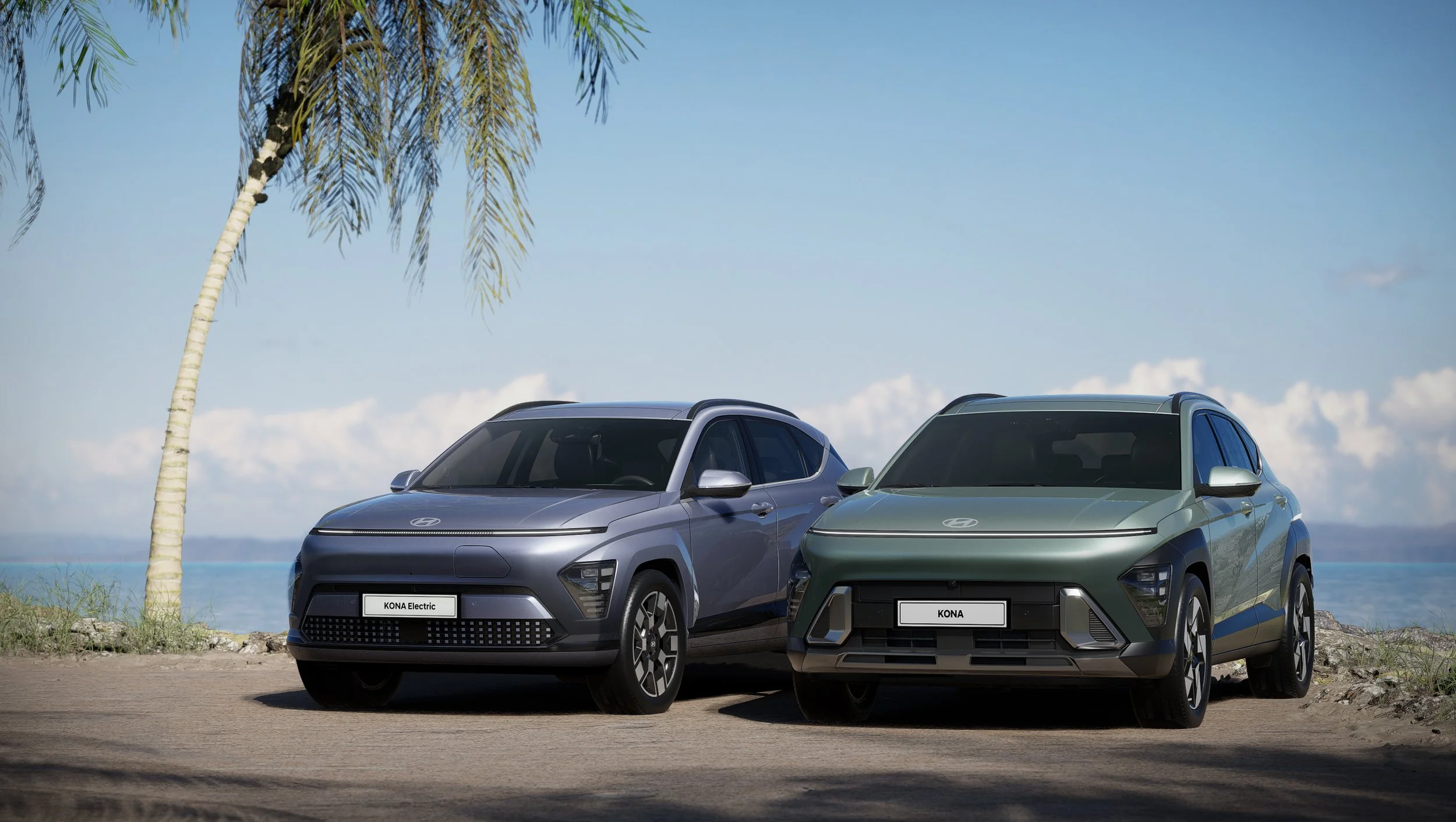Bigger and smarter Kona assured
/Hyundai head office spills more info about next-gen line, including domestic release timing.
MORE detail about the next-generation Kona, including intent to have it on sale in South Korea from March, has been delivered by Hyundai, but with caveat that much of what is being shared is most specific to how it formats for the home market experience.
As previously reported, the model will tailor in all-electric (EV), hybrid electric (HEV) and internal combustion engine (ICE), with sporty N Line versions of each. The electric model, pictured above with a petrol edition, dictated development.
Hyundai is keeping details of the electric under wraps until March, when it will also discuss the export versions more, but has shared that the full petrol cars are a 146kW/265Nm 1.6-litre turbo and a 110kW/180Nm Atkinson cycle 2.0-litre, both paired with a continually variable transmission. The HEV has 1.6-litre direct injection petrol engine paired with an electric motor, making 104kW and 265Nm.
Hyundai has only released dimensional detail for the hybrid and petrols; it’s unlikely the EV will be much larger of course. The new shape is 4350 long, 1825mm wide, 1580mm high (on 17-inch alloys, the smallest choice) and has a 2660mm wheelbase. Meaning it’s 145mm longer, 25mm wider, 15mm taller and has a 60mm longer wheelbase than the outgoing car.
Release of more images show that there are some detail differences to differentiate the drivetrains. The electric alone has the trendy pixelated lights; it’s the first Hyundai model to apply what the maker is calling an iconic design flourish.
The ICE and HEV variants carry over many of the EV’s design characteristics, but the front bumper is distinguished by a three-dimensional garnish and skid plate instead of a radiator grill. The ICE and HEV variants also add contrasting black wheel arch cladding for emphasis.
The HEV variant uses upper and lower active air flaps and the pure petrols have an upper active air flap for a drag coefficient improvement.
The N Line treatment adds more aggressive front and rear designs with wing-shaped bumper, twin muffler and silver side skirt to emphasise its sporty image. A black roof and 19-inch N Line exclusive alloy wheel design are optional in South Korea but will likely be standard here, as that’s been past practice. Inside, the N Line variant is equipped with exclusive metal pedals and N-brand gear shift lever.
Hyundai says the cabin is roomier and more versatile, with increased passenger comfort and easy cargo storage. There’s 77mm longer leg room and 11mm higher headroom in the second-row seats than before. The second-row shoulder room of 1402 mm is cited as being the largest in its class. Kona adopting seats with backrests that are just 85mm thick enhances the roominess.
The car switches to a column-type electric shift-by-wire gear selector behind the steering wheel to free up space, creating an “open, clean console structure that can be used for cupholders or storage for big bags”. The fully foldable second-row seat and rear compartment provide up to 723 litres (based on SAE) of cargo space.
A 1.23 inch dual display screen like that in the Ioniq 5 is used. At least pne version has the electric car’s relaxation comfort seat option; basically a front chair that can recline like an airliner business class seat.
The electronic infrastructure follows the Ioniq;s lead in allowing over-the-air software updates. “This allows car owners to save on cost and have their cars maintained with the latest software, providing an upgradable experience.”
The tailgate has a smart function so drivers can select the opening height and speed on the infotainment system screen, as well as with a button on trhe tailgate itself.
As part of the electronic control technology, the model can be locked, unlocked and started through the Digital Key 2 Touch, using near-field communication on smart phones or smart watches.
Driver assistance systems are numerous, from Forward Collision-avoidance Assist (FCA), Lane Keeping Assist (LKA), Blind-Spot Collision Avoidance Assist (BCA), Safe Exit Warning (SEW), Intelligent Speed Limit Assist (ISLA), Driver Attention Warning (DAW) and Blind-spot View Monitor (BVM) and High Beam Assist (HBA). It also equipped with various driving convenience functions, such as Smart Cruise Control (SCC), Navigation-based Smart Cruise Control (NSCC), Lane Following Assist (LFA) and Highway Driving Assist (HDA)*.
Parking assist tech includes Surround View Monitor (SVM), Rear Cross-Traffic Collision-Avoidance Assist (RCCA), Forward/Side/Reverse Parking Distance Warning (PDW), Reverse Parking Collision-Avoidance Assist (PCA) and Remote Smart Parking Assist (RSPA).





















